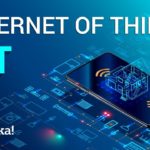 April 19, 2020
April 19, 2020
IIoT is short for Industrial Internet of Things. In the broad strokes, it’s the application of instrumentation and connected sensors and other devices to machinery and vehicles in the transport, energy and industrial sectors.
What that means in practice varies widely. One IIoT system could be as simple as a connected rat trap that texts home to say that it’s been activated, while another might be as complicated as a fully automated mass production line that tracks maintenance, productivity and even ordering and shipping information across a huge, multi-layered network.
Other examples can range from things like soil sensors in a connected agriculture setup relaying nutrient and moisture data to a central hub for mapping and planning, to a production line full of robots sending detailed information about automobile production and warning an operator when important components are showing signs of wear and tear.
Automotive fleet management, manufacturing and the energy sector are probably the biggest users of IIoT technology at this point, but retail and healthcare are seeing rapid growth – retailers like the ability to track customers in their stores and deliver location-relevant content (read: advertisements) in a targeted way, while healthcare providers can make sure imaging and data from items like CT scanners and digital charts can move around freely.
Technologically, IIoT works on similar principals to any other piece of IoT tech – automated instrumentation and reporting being applied to stuff that didn’t have those capabilities before. That said, the scale of it is much different than a simple system that lets you mess with your thermostat on your phone – hundreds, perhaps thousands or even tens and hundreds of thousands of individual endpoints can be present in an IIoT deployment.
There are still definite issues around IIoT that need to be solved – making the best use of all the data that an IIoT setup can generate isn’t simple, and requirements for device service life and reliability are frequently stiff.

And just like consumer IoT, IIoT has a lot of security issues. By now, everyone’s heard of the Mirai botnet, which leveraged poorly secured security cameras and other gadgets into a huge DDoS weapon. Even beyond that, there’s also the issue that those devices can allow access to valuable data already on your network – yet another attack vector.



Recent Comments